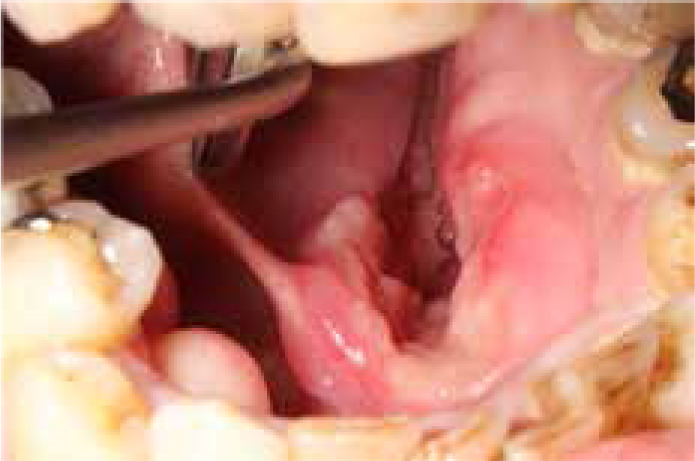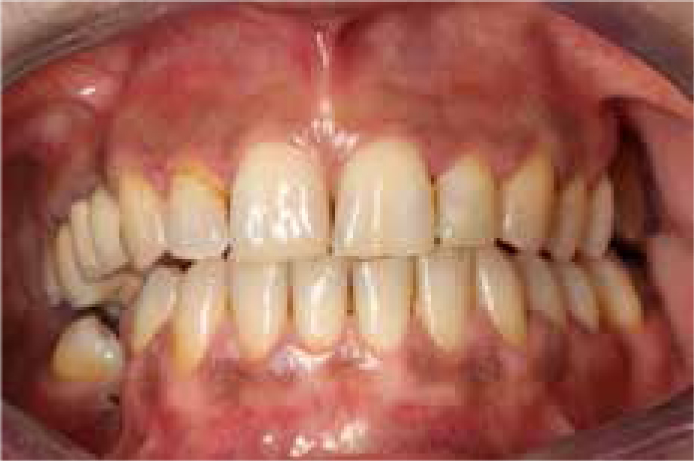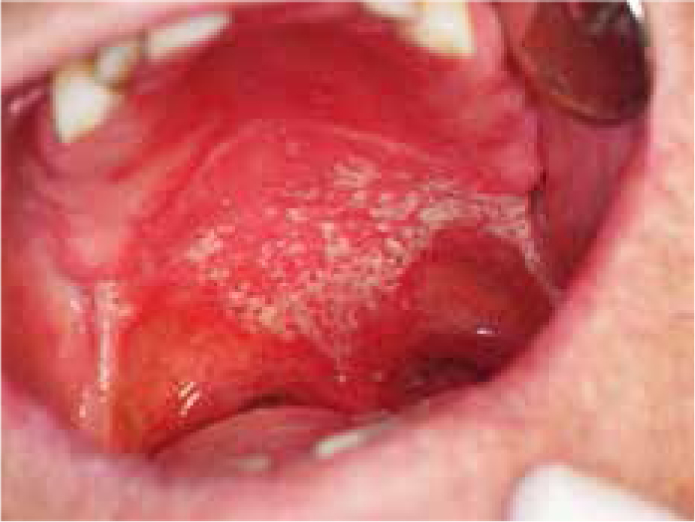References
The dentist's role in smoking cessation management — a literature review and recommendations: part 1
From Volume 45, Issue 3, March 2018 | Pages 197-206
Article

Dentists find themselves in a privileged position. They can access a part of the body actively affected by smoking, even when the individual is healthy. They should therefore be proactive in delivering smoking cessation advice to prevent the deterioration of oral and indeed general health in these individuals.
This article presents a review of current strategies regarding the need for, and provision of, adequate smoking cessation advice by the dental profession and is split into two parts. This part focuses on the oral implications of smoking, alongside the role of the dentist in eliciting a change toward cessation. This means that there must be a basic understanding of how to implement brief cessation advice. The dentist can then impart knowledge appropriately to the smoker of potential oral sequelae. For example, a smoker noticing that his/her teeth are becoming loose may be a crucial motivating factor in encouraging cessation.
Part 2 focuses on the ‘stages of change’ approach to encourage smoking cessation, continuing a ‘patient-centred’ approach. Knowledge of the ‘stages of change’ model ensures that the dentist offers advice that is appropriate based on the patient's willingness to quit, safeguarding the dentist-patient relationship. It is important that the dentist understands nicotine replacement therapies (NRT), pharmacotherapy and electronic cigarettes to answer any questions which may be fielded by the patient. We have therefore provided simple, yet thorough and appropriate, information within the second article.
Background
For over 200 years, there has been an ever-increasing body of evidence regarding the risks of tobacco use.1 Links between clay pipe smoking and malignancy of the lip and mouth were made as early as 1795 by Sömmering,2 with later studies linking smoking with lung cancer and vascular disease.3 Smoking was initially an accepted ‘social norm’ in society, viewed simply as a glamorous habit, with little attention paid to tobacco's addictive nature. The concept of physical, and more so psychological, addiction in relation to cigarette smoking is a relatively new one and it is only comparatively recently that the role of nicotine in sustaining smoking behaviour has become widely accepted.4
Smoking is the largest cause of preventable disease and an important cause of premature death worldwide.5 Almost 90% of lung cancer diagnoses and 25−30% of all cancer-related deaths are in smokers.6 Eighty percent of chronic obstructive pulmonary disease diagnoses are made in individuals who have a history of smoking.7 Further damning indictments are made by the US Surgeon General in the report ‘The Health Consequences of Smoking − 50 Years of Progress.’8 In this report, it is claimed that ‘cigarettes are a defective product − unreasonably dangerous, killing half its long-term users and addictive by design.’
It is now understood that cigarette smoking is a manifestation of nicotine dependence in both physical and psychological forms.9 Nicotine addicts will engage in smoking to relieve boredom and as a habitual act, manifestations of the psychological addiction, alongside regulating the draw and inhalation that they take of a cigarette, titrating their nicotine dose to their perceived physical need.10
What risks of smoking should dentists be aware of?
Oral cancer
There is a great deal of evidence citing smoking as the main causative agent in oral cancer.11 Indeed, smokers have a three times greater chance of developing oral cancer, as shown by a meta-analysis of 254 publications reporting a relative risk 3.43 for oral cancer among current tobacco smokers compared with non-smokers.11
Conditions commonly defined as cancer of the oral cavity comprise those classified in the ‘International Classification of Diseases’ (IDC) as cancers of the lip, tongue, mouth and oropharynx (ICD10 codes: C00-08). The most common sites affected by cancer are the tongue, gingivae, floor of mouth and lip.12 It has been identified that smokers often drink higher quantities of alcohol and the synergy of alcohol and smoking in causing oral and pharyngeal cancer should not be overlooked. Whilst alcohol consumption has been linked with oral and pharyngeal cancer, it is the synergistic effect of alcohol with smoking that significantly increases the risks of such neoplasms.13
In Europe, oral cancer accounts for 0.7% of all deaths from cancer. It is the 15th most common cancer, with 61,400 diagnoses and 23,600 deaths across Europe in 2012.14 Of these diagnoses and deaths 42,600 and 17,600, respectively, were reported in male patients.14 There was a 11% increase in 5-year survival following an oral cancer diagnosis from 2003 to 2013 when compared to 1993 to 2003. In the 2003–2013 group, patients typically presented at an older age, with more advanced disease and more distant metastases. The reasons for increased survival therefore remain unclear, though likely involves improvement in surgical and medical therapies.15
Four years after stopping smoking, the risk of oral cancer is 35% lower than for a ‘current smoker.’ It can take another 15 years for this to reach the level of someone who has never smoked.16 In addition a meta-analysis, based on nine studies, reported a non-significant risk among former smokers when compared with non-smokers.11
An example of a squamous cell carcinoma in the floor of mouth can be seen in Figure 1.

Erythroplakia/Leukoplakia
Both erythroplakia and leukoplakia can present with atypical histopathological changes and are more commonly seen in smokers than non-smokers. Microscopical changes observed are described as ‘dysplasia.’
Leukoplakia is defined as a ‘white plaque of questionable risk having excluded known diseases or disorders that carry no increased risk of cancer.’17 They are benign in 80%, dysplastic in 12%, carcinoma in situ (CIS) in 3%, and invasive carcinomas in 5% of cases. An example of a mildly dysplastic leukoplakia is shown in Figure 2.

Erythroplakia is defined as ‘A fiery red patch that cannot be characterized clinically or pathologically as any other definable disease.’18 These present as carcinoma in 51% of cases, severe dysplasia or CIS in 40% of cases, and mild to moderate dysplasia in 9% of cases. When a single lesion contains both red and white patches, it is referred to as ‘erythroleukoplakia’.18 These typically show the highest rates of more severe dysplasia on biopsy.
Assessing the presence of dysplasia and providing smoking cessation advice is therefore extremely important in individuals presenting with these conditions.19
Oral mucosal conditions
Nicotinic stomatitis
This typically presents as a greyish-white appearance of the palate, with a reddened, nodular appearance of inflamed minor salivary ducts throughout. The condition resolves following smoking cessation and has no long-term consequences. An example of nicotinic stomatitis can be seen in Figure 3.

Smoker's melanosis
Twenty-two percent of smokers develop tobacco-associated oral melanin deposits, with severity being dose dependent.20 It affects women more commonly than men.20 The condition can (but doesn't always) resolve following smoking cessation and has no long-term health consequences. An example of smoker's melanosis can be seen in Figure 4.

Oral candidosis
Smokers have an increased risk of oral candidosis, but the mechanism is not fully understood.21 This could potentially be due to cigarette smoke, which is nutritional for C. albicans (the causative agent of candidal infection), or because the smoking results in localized epithelial alterations, resulting in candida colonization.22 Smoking may also have a role in suppressing the oral immune response and disrupting normal bacterial flora.23 The condition can be treated with anti-fungal medications and usually causes no long-term consequences except when candidal hyphae enter the surface epithelium causing chronic candidosis. A classic appearance of oral candidosis can be seen in Figure 5.

Periodontal disease
There are clear, well documented links between smoking and periodontal disease. Smokers have a 2- to 3-fold increased risk of clinically identifiable periodontitis. They also have fewer teeth and are more likely to be edentulous than non-smokers. The risk of alveolar bone loss is seven times greater amongst smokers than non-smokers, and the severity of periodontal disease in smokers appears to be dose dependent.24 There is evidence that smoking cessation reduces the risk of periodontal disease.24 Successful treatment of periodontal disease in smokers is lower than that in non-smokers.24 Increased prevalence of periodontal disease is linked to smoking dampening the body's immune response, meaning that the smoker has a reduced ability to clear pathogens.24
Smoking also increases the prevalence of acute necrotizing ulcerative gingivitis and acts as a co-destructive factor for periodontal tissue damage alongside other predisposing factors (for example diabetes).24 An example of chronic periodontal disease can be seen in Figure 6.

Dry mouth, halitosis and caries
Smoking has been shown to reduce salivary flow rate.25 A drier mouth results in numerous oral sequelae, with one of these being increased halitosis. Less saliva leads to reduced ‘cleansing’ of the oral mucosa and smokers typically have worse oral hygiene than non-smokers. A drier mouth with poorer oral hygiene will also result in an increased incidence of dental caries.26 There is evidence to suggest that smoking causes irreversible damage to minor salivary glands, meaning that salivary flow may not increase to original levels even after successfully stopping, making timely cessation paramount.
Wound healing
Smoking is implicated in poor wound healing.27This is because smoking reduces blood flow to oral tissues alongside inhibiting the enzyme systems necessary in oxidative metabolism and oxygen transport. There is also the introduction of contaminants into the wound from tobacco smoke, further inhibiting healing; an example of this would be that it takes longer for a socket to heal following extraction in a smoker than a non-smoker.
The use of any tobacco product is associated with increasing risk of alveolar osteitis, or ‘dry socket.’ This has, in part, been related to the vasoconstrictive effects of nicotine on small blood vessels.27 Abstaining from smoking following oral surgery/trauma has therefore been shown to reduce the risk of a ‘dry socket’ occurring.27
Implants
Smoking is implicated in the failure of dental implants in all areas of the mouth.28 Although there is a risk of dental implant failure in all patients, smoking can be considered a ‘significant risk factor’ in dental implant placement.28
Aesthetics
All forms of smoking and chewing tobacco can discolour teeth, and smokers are more likely to perceive their teeth as discoloured compared to non-smokers.29 Smoking can also lead to increased incidence of tooth loss and has also been linked to increased skin ageing.30
Smoking also leads to an increased amount of calculus formation which can look unsightly, requiring a dentist or hygienist to remove it.
Recurrent Apthous Stomatitis
Recurrent Apthous Stomatitis (RAS), is one of the most common conditions to manifest within the oral cavity. It affects up to 20% of the population at some point in their lives and about 2% chronically. Most patients present with occasional ulceration which resolves rapidly without complications. Others have severe ulcers that interfere with diet and function. Such ulcers are a common result of stopping smoking, affecting two in five quitters.31 Reassurance regarding oral aphtous ulcers should be given from primary care practitioners. In more severe or complex cases, referral to an oral medicine department may be indicated.
The role of dentists
As dentists, we are central in dispensing advice regarding smoking cessation. Fifty-seven percent of the EU population regularly visit a dentist,32 giving dental professionals the opportunity to offer information and support to those who smoke. A Cochrane review shows that brief intervention by health professionals is effective in helping tobacco users to quit.33 This ‘brief’ advice has been shown to increase smoking cessation by 2%. Whilst this number seems small, it could equate to between 63,000 and 190,000 people quitting each year in Britain alone.34 By referring to stop smoking services, successful cessation increases to 15%.35
The effects of smoking on the body are numerous, but often smokers do not believe anything bad will happen to them. This reduces the incentive to stop, and is also linked with relapse in those who have quit.36 As dentists, we have access to an area of the body that is actively affected. A healthy, unrestored smile is perceived to be an important social asset.37 The prospect of losing this may be an important factor in successful smoking cessation.
Dentists often cite issues such as lack of time or education as a reason why they do not offer smoking cessation.38 By understanding how behavioural management and medical therapies are used in smoking cessation, the dental team can offer suitable advice to patients, helping to increase successful cessation. Members of the dental team can then remain empathetic and supportive during the patient's cessation journey, offering positive feedback and advice regarding his/her chosen cessation modality.
Despite being well positioned to offer cessation advice, individuals working within dentistry do not always discuss their patient's tobacco use. A study by Smith et al39 showed that motivated dentists were particularly good at offering smoking cessation to patients. However, less than 50% of dental practices involved in the study offered referrals to stop smoking services. Further studies confirm that dentists are often poor at referring to stop smoking services, or offering brief interventions ‘in-house’.40 There is substantial evidence to suggest that such ‘in-house’ interventions are useful for helping smokers quit.41 When it is considered that patients expect their oral health professionals to assist in cessation attempts, this gives further reason for dental professionals to understand and implement cessation techniques.42
Brief cessation advice; the use of the 5 and 3 ‘A’s protocol of smoking cessation
The 5 ‘A’s approach to smoking cessation is the internationally accepted approach to brief intervention in nicotine users, with this ‘brief’ advice in primary care settings shown to increase smoking cessation by 1−3%.43 The 3 ‘A’s contains a similar message, but in a condensed format. Before the stages of the 5’A’s and 3’A’s are discussed, it is important to understand that different countries have different protocols to implement smoking cessation, and these are based on WHO Article 14 guidance in the Framework Convention on Tobacco Control.44 This article encourages the creation of a sustainable infrastructure to promote and deliver increased levels of smoking cessation based on best available scientific evidence, encouraging implementation of reproducible and successful methods of smoking cessation.
The 5 ‘A’s protocol
These guidelines can be summarized by the 5 ‘A’s:
Ask about and record smoking status.
Advise smokers of the benefit of stopping in a personalized and appropriate way.
Assess motivation to quit (using stages of change model).
Assist smokers in their quit attempt.
Arrange follow up with stop smoking services.
Advice from the healthcare practitioner does not have to be focused on the minutiae of cessation and needs only to last three minutes.45 Whilst knowledge of the treatment modalities to result in cessation are useful, ultimately the specialized stop smoking services will be able to discuss any potential issues adequately with the individual.
The 3 ‘A’s protocol
For practitioners who genuinely do not have time, a 3'A's approach may be acceptable. As dentists seem to be content with the first two ‘A’s in either scenario, it is the addition of ‘action’ on responses which increases success rates in quitting. This can be summarized as follows:
Ask and record smoking status.
Advise patient of personal health benefits.
Act on patient's response.
This very brief advice can be delivered in less than one minute and there is an absence of conclusive evidence to indicate that the 5’A’s approach is more successful than the 3’A’s.46
The authors are aware of the need to be pragmatic in the approach to smoking cessation in the dental setting, therefore advise that the 3’A’s intervention is the best brief intervention to be undertaken by dentists. It is easier to complete than the 5’A’s and, if done properly, both approaches result in similar rates of smoking cessation. A flow chart to show a potential patient interaction is shown in Figure 7.

Patient-centred cessation
It is important to maintain the patient at the centre of any cessation attempt. It must therefore be ensured that practitioners focus their approach on the responses of patients. For example, if the patient smokes, and does not wish to stop now, the dental professional must remain non-judgemental. The dental professional could say, for example, ‘I can understand you don't want to quit right now. I'm sure you are aware smoking is bad for you, so if at any point you want to discuss quitting with me I would be happy to talk about it.’ This allows patients to plan their actions. If patients are positive in their response, the authors recommend that the 3 ’A’s approach can be continued. The authors appreciate that the 5 ‘A’s is a more thorough approach to smoking cessation, however, the 3 ‘A’s is easier and more likely to be implemented in the fast-paced dental environment. This intervention should be viewed as a flow chart, dependent on the patient's response, not something that is simply undertaken with no regard for the patient's interaction. Solberg et al showed that a healthcare professional's approach to smoking cessation is central to its success.47 Dental professionals should therefore act appropriately when discussing quitting with an addicted individual. Ultimately, the decision to contact stop smoking services can be made by the individual. Self-referral has been shown to be linked to increased success in cessation, and the dentist can empower the individual to make this decision.48
Conclusions
A misperception made by many is that willpower alone is enough to fuel a quit attempt, something which is refuted by nicotine addicts and academics in equal measure.49 One third of successful cessation attempts necessitate either medical or psychological therapy to result in a successful outcome and these will be discussed in part 2.50
It is important to remember that, even after dispensing advice in the correct way, some smokers will choose to reject the conventional smoking cessation model despite being aware that they may have an increased chance of successful cessation.51 The reasons for this are often difficult to quantify and are more complex than simple misconceptions or correctable barriers to treatment.52 With these individuals, practitioners must simply be supportive and understanding of the patient's wishes and understand that brief cessation advice can offer some, albeit limited, benefit.
